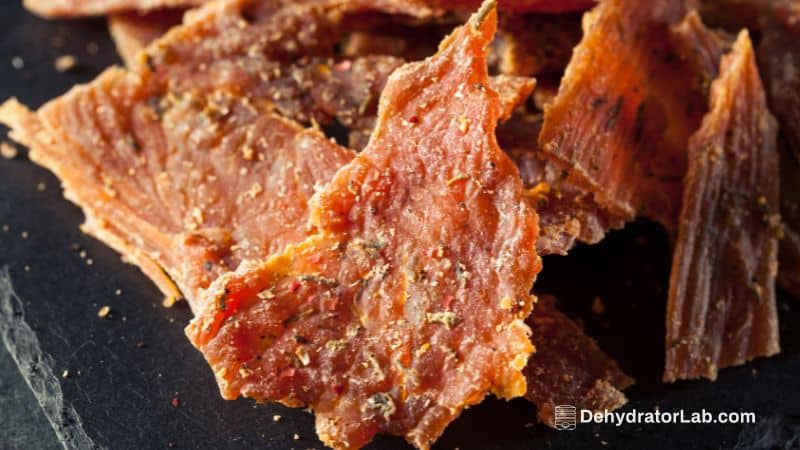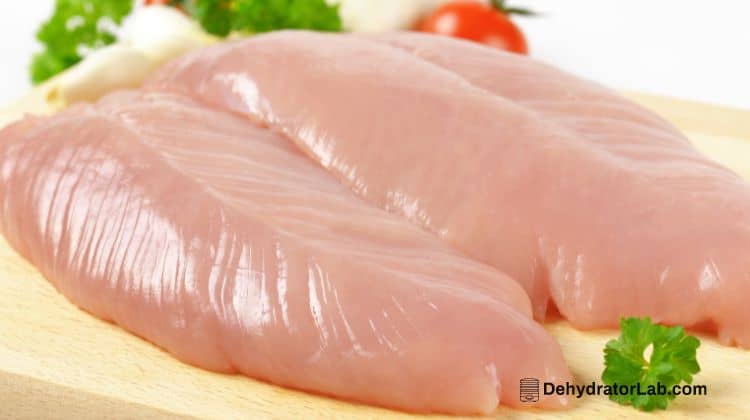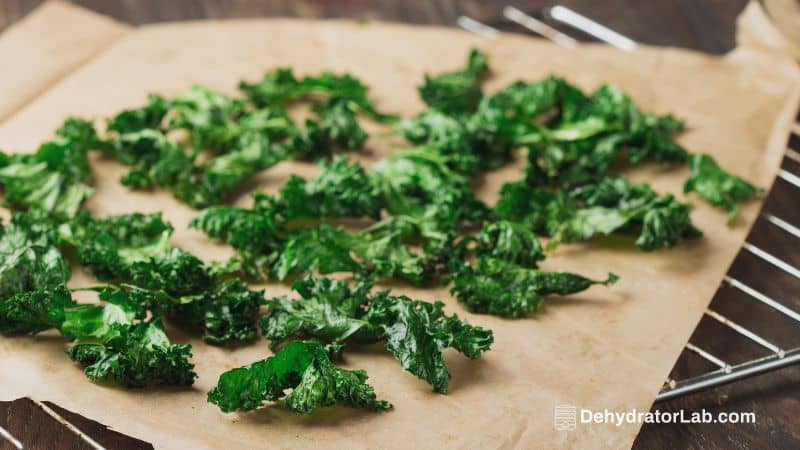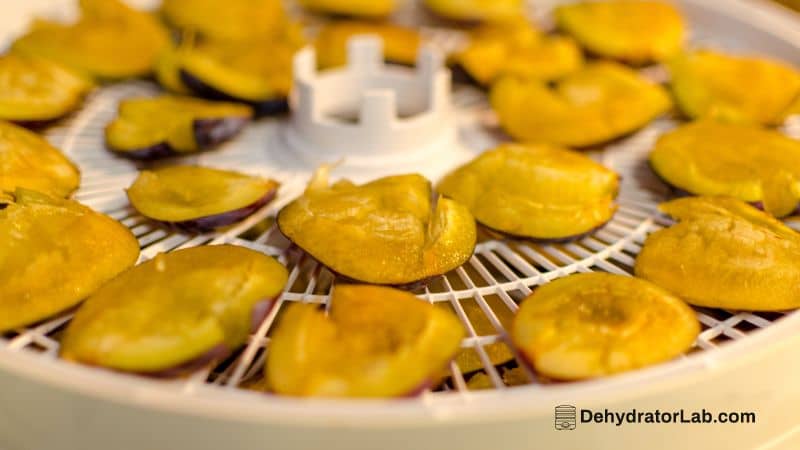Craving a mouthwatering, protein-packed snack that you can’t resist? Look no further! Discover the secrets to how to make turkey jerky right in your own kitchen.
In just a few simple steps, you’ll unlock a world of flavor and nutrition that will leave you coming back for more. Get ready to elevate your snacking game with our quick and easy guide to making irresistible turkey jerky!

As an Amazon Associate, I earn from qualifying purchases. If you make a purchase after clicking on a link I may earn a small commission at no extra cost to you if items are purchased.
In this article:
A Brief History of Jerky
The origins of jerky can be traced back thousands of years to ancient civilizations such as the Inca and indigenous tribes in North America. In South America, the Inca empire perfected the art of preserving meat by cutting it into thin strips and drying it in the sun or over open fires.
Similarly, Native Americans in North America would season and dry strips of meat, often from bison or deer, for consumption during lean times or when embarking on lengthy hunts. Over time, as technological advancements emerged, different methods for making jerky developed worldwide.
The European settlers in North America learned from Native American tribes about smoking meats to enhance flavor and extend shelf life. They adapted these techniques using their local ingredients such as beef and game animals like a wild turkey.
Turkey Jerky and Its Popularity
Turkey jerky has gained significant popularity among health-conscious individuals seeking an alternative protein snack that is low in fat but high in flavor. Compared to beef jerky, turkey offers a leaner option while still delivering a delicious taste experience.
Turkey breast is particularly suitable for making jerky due to its tender texture when properly prepared. In recent years, turkey jerky has become increasingly sought after due to its versatility and nutritional benefits.
Being low in calories and fat while providing essential nutrients like protein and iron makes it an appealing snack for fitness enthusiasts and those following special diets. Furthermore, turkey jerky’s savory flavors, often enhanced by marinades or seasonings, make it an enticing option for people seeking a savory yet healthier alternative to traditional snacks.
How to Choose the Right Turkey
Selecting a Lean and Tender Turkey Breast
When it comes to making turkey jerky, selecting the right turkey breast is crucial. Opting for a lean and tender cut will contribute to the overall quality and taste of your homemade jerky.

Look for a turkey breast that has minimal visible fat and marbling. This ensures that your jerky will be flavorful while avoiding excessive grease or chewiness.
A boneless, skinless turkey breast is the ideal choice for making turkey jerky as it provides a clean canvas to work with. To ensure tenderness, consider purchasing a young turkey breast, preferably from a reputable source.
Young turkeys are typically more tender compared to their older counterparts. Additionally, choose fresh turkey breast rather than frozen, as this allows you to have greater control over the quality of the meat.
Consider Organic or Free-Range Options for Better Quality
For those seeking superior flavor and ethical considerations, opting for organic or free-range turkey breasts is highly recommended when making turkey jerky. Organic turkeys are raised without antibiotics or hormones and are fed an organic diet. This results in meat that is more flavorful due to the natural feed and healthier lifestyle of the birds.
Similarly, choosing free-range turkeys ensures that they have access to outdoor space where they can roam freely and engage in natural behaviors. This promotes better muscle development, resulting in meat with improved tenderness and flavor profiles.
While organic or free-range options may come at a higher price point than conventionally raised turkeys, their superior taste and ethical benefits make them well worth considering when embarking on your journey of creating delicious homemade turkey jerky.
Remember, selecting lean and tender cuts along with high-quality sourcing sets the foundation for exceptional homemade turkey jerky that will leave everyone craving for more.
Preparing the Turkey Breast
Removing the Skin and Excess Fat
To start the process of making delicious turkey jerky, it is essential to prepare the turkey breast properly. Begin by ensuring that your turkey breast is fully thawed if previously frozen or use a partially frozen one for easier slicing.
With a sharp knife in hand, carefully remove the skin from the turkey breast, as it contains a significant amount of fat that can hinder proper dehydration.
Removing the skin will not only result in a leaner jerky but also prevent excessive grease from accumulating during the drying process. After removing the skin, it’s time to trim off any visible excess fat from the turkey breast.
Fat tends to spoil quickly and can lead to an unpleasant taste in your final product. By eliminating excess fat, you’ll ensure that your jerky remains tender and flavorsome throughout its shelf life.
Slicing the Breast into Thin Strips Against The Grain for Optimal Tenderness
Once you have prepared your turkey breast by removing the skin and excess fat, it’s time to slice it into thin strips for optimal tenderness when making turkey jerky. Begin by placing your trimmed breast on a clean cutting board with its grain direction visible.
Using a sharp knife at a 45-degree angle against the grain of meat fibers will result in more tender jerky. You should aim for consistently thin slices, approximately 1/8 to 1/4 inch thick, as this ensures even drying and eliminates chewy or undercooked portions.
Maintaining uniformity in slice thickness is crucial because thinner slices dry faster than thicker ones; otherwise, you may encounter hot spots where some pieces remain undercooked while others become overcooked.
By precisely slicing against the grain of meat fibers, you create shorter muscle strands within each strip of jerky.
This technique allows moisture to escape more efficiently during dehydration, resulting in an irresistible texture and maximizing the absorption of flavor from your chosen marinade. Remember, the success of your homemade turkey jerky relies heavily on proper preparation.
Removing the skin and excess fat ensures a lean and quality product while slicing against the grain guarantees optimal tenderness. With these steps completed, you’re now ready to move on to marinating your turkey strips for an explosion of flavors in every bite.
Marinating the Turkey Strips
The Art of Enhancing Flavor and Texture
Marinating the turkey strips is a crucial step in the process of making homemade turkey jerky. It not only adds depth and complexity to the flavor profile but also helps tenderize the meat, resulting in a more enjoyable eating experience. By allowing the turkey slices to soak in a flavorful mixture, you can infuse them with deliciousness that will make your taste buds dance with joy.
To marinate turkey jerky, you have numerous options at your disposal. The choice of marinade depends on personal preference and can range from sweet and tangy to spicy or smoky. Speaking of spicy you can try our Korean sweet & spicy jerky recipe as well.

One classic go-to marinade for turkey jerky includes a combination of soy sauce, Worcestershire sauce, garlic powder, onion powder, black pepper, salt, and a touch of liquid smoke. This blend creates a savory umami flavor and enhances the natural richness of turkey.
For those who prefer sweeter notes in their jerky, opting for a marinade that includes honey or maple syrup can add a delightful sweetness that complements the meat’s inherent savory notes. On the other hand, if you crave some heat in your jerky, consider adding chili flakes or cayenne pepper to your marinade for an exhilarating kick.
Exploring Marinade Options: Sweetness Meets Spice
When it comes to experimenting with flavors for your turkey jerky marinade, don’t be afraid to get creative. You can draw inspiration from various cuisines around the world or adapt classic recipes by introducing unique ingredients.
For those seeking an Asian-inspired twist on their homemade turkey jerky mix, consider using soy sauce as the base ingredient along with ginger powder or grated fresh ginger for an added zing. Adding a touch of sesame oil will give it an aromatic nuttiness that perfectly complements the tender turkey strips.
If you prefer a smokier flavor profile, try incorporating smoked paprika or chipotle powder into your marinade. These spices infuse the turkey with a subtle smokiness that evokes the feeling of indulging in wild turkey jerky cooked over an open flame.
For an additional layer of complexity, you may even want to experiment with different wood flavors like hickory or mesquite, especially if you plan on smoking your jerky. Remember, regardless of the marinade you choose, it is essential to let the turkey strips marinate for several hours or overnight in the fridge.
This allows the flavors to permeate the meat fully and ensures a tender texture when making your jerky. By thoughtfully selecting your marinade and giving it time to work its magic, you can transform simple turkey strips into delectable homemade jerky bursting with flavorful nuances that will keep you coming back for more.
Dehydrating Methods for Turkey Jerky
Traditional Oven Drying Technique
When it comes to making turkey jerky, the traditional oven-drying technique remains a popular recipe choice. To begin, preheat your oven to a low temperature of around 170°F (77°C).
This gentle heat will slowly and evenly dry out the turkey strips, resulting in delicious and tender jerky. Next, place the sliced turkey strips on wire racks in a single layer to allow for proper airflow.
This ensures that each strip dries uniformly and prevents any moisture from getting trapped underneath.
You might like: Best Convection Oven
Using a Food Dehydrator
For those seeking dedicated equipment specifically designed for dehydrating foods, investing in a food dehydrator is an excellent choice when making turkey jerky. These handy machines offer several benefits that elevate the jerky-making process.
First and foremost, using a dehydrator eliminates the need for constantly monitoring your oven door or adjusting temperatures as it provides consistent heat distribution over an extended period.
Additionally, modern dehydrators often come with adjustable temperature settings tailored to specific foods. You can take a peek at our selection of the best food dehydrators for jerky.
Remember to follow the manufacturer’s instructions closely regarding temperature and time settings according to your desired level of doneness.
Smoking Option for Extra Flavor (Optional)
Brief Overview of Smoking Techniques
For those looking to add an extra layer of flavor complexity to their turkey jerky recipes, smoking is an optional yet delightful choice. Smoking involves exposing the meat to flavorful wood smoke during the dehydration process. You can check out on Amazon for a smoker grill if interested.
You can achieve this by using wood chips or adding a smoker box filled with wood pellets or chunks directly into your oven or food dehydrator.
Hickory and mesquite are popular choices due to their strong flavors that complement poultry excellently.
The choice of wood used for smoking can dramatically impact the taste of your turkey jerky. Hickory wood imparts a rich and robust flavor, resulting in a classic smokiness that pairs well with turkey.
On the other hand, mesquite offers a stronger and slightly sweeter flavor profile that adds depth to the jerky. Experimenting with different wood flavors allows you to tailor the taste according to your preference, making each batch of jerky a unique culinary experience.
Storing and Preserving Turkey Jerky
Importance of Proper Storage to Maintain Freshness
Once you have successfully created your delicious turkey jerky, proper storage is essential to maintain its freshness and extend its shelf life. Store your finished jerky in a cool, dry place away from direct sunlight and moisture.
It is crucial to keep the internal temperature low as heat can cause spoilage or affect the texture. To maximize freshness, consider storing your turkey jerky in an airtight container or vacuum-sealed bag.
Vacuum Sealing or Using Airtight Containers
Using vacuum-sealed bags or airtight containers helps prevent moisture absorption and keeps the jerky’s texture intact for longer periods.
Vacuum sealing removes air pockets from within the packaging, minimizing exposure to oxygen that could lead to spoilage or flavor degradation. If using an airtight container, ensure it is clean and completely dry before transferring the turkey jerky into it.
Safety Tips and Hygiene Practices
Ensuring Proper Food Handling during Preparation
Maintaining good food handling practices is crucial when making turkey jerky (or any other food). Start by thoroughly washing your hands before handling raw meat.
Use separate cutting boards for raw poultry to avoid cross-contamination with other ingredients. Additionally, sanitize all utensils and surfaces that come into contact with the raw turkey to prevent the spread of harmful bacteria.
Conclusion
Whether you choose the traditional oven-drying technique or opt for the convenience of a food dehydrator, both methods ensure you can enjoy homemade turkey jerky bursting with flavor.
For those seeking an extra smoky twist, experimenting with different wood flavors through smoking techniques adds a delightful complexity to your own turkey jerky recipe.




